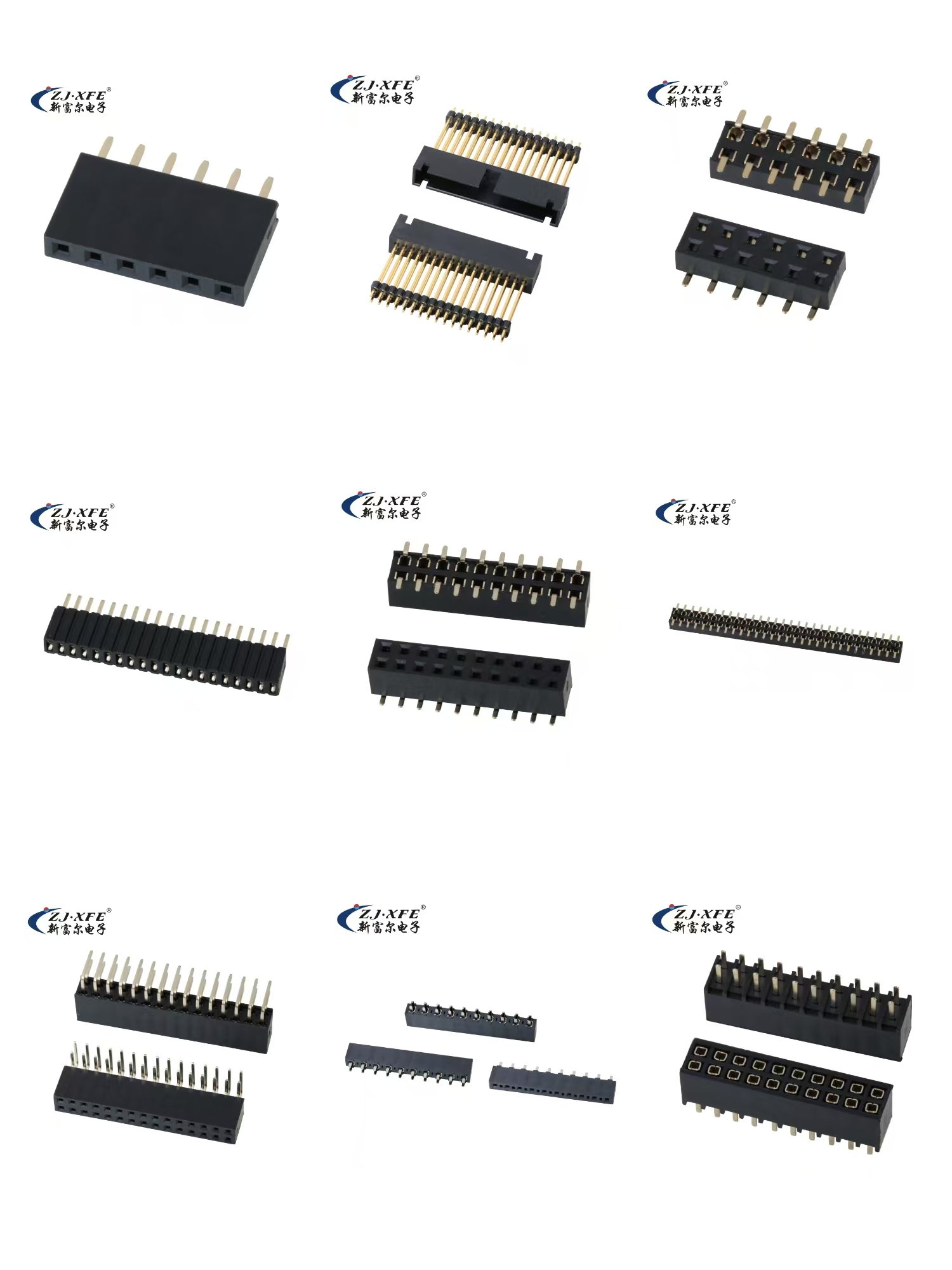The differences between Pin header and female header
 2025-07-17 18:33:41
2025-07-17 18:33:41

Pin header and female header are two common components in electronic connectors, which play a role in connecting andconducting in electronic devices. The difference between Pin header and female header:1. Different exteral structures: The female header is usually rectanqular or circular with multiple sockets; And the pin header is asingle row/double rows of protruding pins, shaped like nails,2. Diferent functions: The female header is mainly used to connect pins on the circuit board, while the pin header is mainly used toconnect sockets on the circuit board.
3. Different usage scenarios: female headers are more widely used on circuit boards and are suitable for various types of circuitconnections, Pin headers are mainly used in specific connection scenarios, such as plug-in connections,4. Diferent connection methods: the female header is connected through a socket, while the pin header is connected through aprotruding pin.
How to correctly pair and use Pin header and female header
1. Understanding the reguirements: Before selecting the female header and pin header, it is necessary to first understand the specific requirements of the circuit connection, such as the connection method, number of pins, and number of insertions and removals,
2. Choose the appropriate type: Select the appropriate female header and pin header types according to your needs. If multiple pins need to be connected, you can choose multi bit female headers and pin headers; If plug-in connection is required, a pin set with locking function can be selected.
3. Ensure Matching: When purchasing female headers and pin headers, it is necessary to ensure that their size, number of pins, and shape match. Otherwise, it may result in a weak connection or inability to connect.
Installation precautions: When installing the female headers and pin headers, ensure that their connection parts are clean, dry, and avoid oxidation or contamination. At the same time, installation should be carried out in the correct order to avoid damaging the circuit board. Test connection in the future: After the connection is completed, the connection parts should be tested to ensure reliable connection. If there are any problems, they should be adjusted or replaced in a timely manner.


